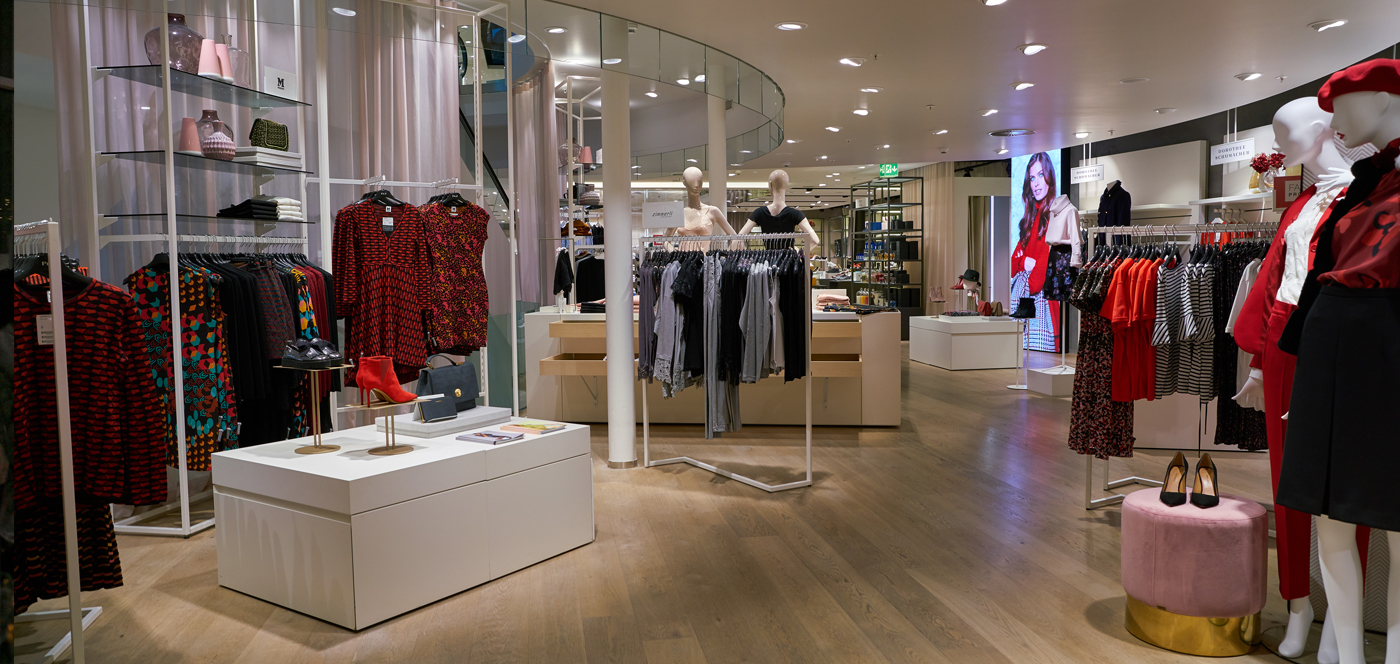In this article, we delve deep into our key insights gained from working with premium clients from the DACH region. Our experience has shown us that customer expectations are continuously growing and that a swift adaptation to the changing customers purchasing habits is a must in order to thrive in 2020, especially during the COVID-19 crisis. Therefore, we deem important to look into the main factors that are often obstacles to the success of premium brands, and if accordingly dealt with, lead to an evident sales growth and better customer experience.
1. MAINTAINING THE BRAND IMAGE IS NO.1 PRIORITY: INTEGRATING THE BRAND IDENTITY INTO THE CX IS THE WAY TO GO
Premium brands have invested tremendous amount of time and money in building up and upholding their reputation and brand values by incorporating them into their premium branded products and working on their brand perception. Therefore, this should remain a top priority not only when crafting their digital presence, but also be carefully interwoven into every step of the customer journey.
2. ECOMMERCE ATTITUDE: MANY PREMIUM BRANDS ARE LAGGING BEHID MORE AGILE “MAINSTREAM” BRANDS
In comparison with “mainstream” brands, premium brands are slower to accept the newest trends of driving online sales. The common attitude of high-end brands is that if they build something, customers will automatically come and buy. Yet, the core trading and merchandising principles remain the same both for luxury and ordinary brands, what makes a difference is their approach and execution, which will ultimately be reflected in the customer experience and behavior.

3. UNCLEAR ROI AND KPIS: THE TARGETS ARE NOT ALWAYS CLEARLY DEFINIED
We have seen clients who invest in new online features and functionalities without previously setting the targets and measures of success. There have been instances where no empirical data has been provided in support of a new functionality or feature, what lead to increased cost when implementing it across a multi-brand estate. It is of vital importance that high-end brands understand what their measures of success (revenue growth, conversions, store visits, subscriptions etc.) are and then analyze which features are going to improve which KPIs and to what degree.
4. OPENNESS TO BUSINESS CHANGE: DIFFERENT ATTITUDES BETWEEN PREMIUM AND “MAINSTREAM” BRANDS
From our experience of working with premium brands, we have seen that they are reluctant to changing the traditional ways of working, despite their expressed wish to embrace the latest digital trends. Therefore, it is as important to alter the mindsets and attitudes as it is to change the ways of working and the processes. On the other hand, “mainstream” brands, by their very nature, are much more agile and open to digital change. Yet, some may leg behind premium brands in terms of structural organization and discipline to implement changes in their business teams. In this case, the right mindset is already there, yet what needs to be improved is the organizational structures and team management.
5. NOT EMBRACING OMNICHANNEL: NO COHERENT DIGITAL STRATEGY
Some more traditional premium brands tend to believe that what functioned well in the past will function in the future as well. Due to this belief, they stick to the heritage ways of working, both culturally and operationally, and as a result fail to fully adopt an omnichannel marketing approach, sticking to the attitude that what brought them success in the past will also serve them well in the future. A lack of coherent omnichannel digital strategy leaves them in an unfavorable positon struggling to be up to par as customers’ expectations of premium brands have moved on. What is needed is a deep understanding of how luxury shoppers shop, which will certainly challenge some of the long-held believes about what the right customer experiences are.

6. AESTHETICS VS. PRACTICALITY
For premium brands, the most important aspect is the aesthetic of their brand and how it is presented online, as a result they make decisions that are not commercially smart for their business, just because something looks nice. As a consequence, the customer journeys are often poor, which is commercially damaging to the business, negatively affecting the customer experience and reducing conversions. What we recommend is a balance between the aesthetics and the practicality.
7. GROWING CUSTOMERS’ DELIVERY EXPECTATIONS
The growing customers’ delivery expectations pose not only a challenge for mainstream businesses, but also for premium brands. Therefore, we found it important to mention it as a separate point in this article.
We have witnessed a drastic change in the customers’ expectations over the years. As new shoppers enter the marketplace, companies that are looking to thrive should take the delivery time into serious consideration. As found out in a recent study, 1 in 5 from Generation Alpha will buy only if the company delivers next day and 3 in 5 wish for a delivery in 2 hours in the future.
Our recommendation is to always keep the customers’ expectations in mind and try to create a seamless system that could as quickly and reliably as possible offer a technology-enabled delivery in order to stay ahead of the game.

8. TECHNOLOGY AND BUSINESS TOOLS AS CRITICAL ENABLERS FOR “PUREPLAY” BRANDS
What gives “pureplay” brands a major advantage is their use of technology and digital features, which are their key “selling tools” and the main assets in attracting, building and maintaining relationships with their customers. The ease, efficiency and flexibility in the use of backend business tooling allows them to retain their customers and optimize these relationships, what ultimately drives sales. Thus, it is equally important to fully understand and develop your backend business tooling and optimize the user experience, as it is to work on the front end. What we recommend, when working on a new business tooling, is to firstly identify the real customer needs and only afterwards develop a business solution to meet them.
9. KEEPING A BALANCE BETWEEN CONTINUOUS PROJECT DELIVERY AND BAU OPTIMISATION
Many leading technology premium brands falsely believe that they need to constantly innovate and evolve by delivering the latest features and technologies, in order to stay ahead of the pack. With this mindset, many get stuck in a state of constant project delivery, jumping from one project to the next one, without evaluating the value and the success of what has already been delivered. Yet, keeping a balance between project delivery, assessing performance and ongoing optimization through BAU (business as usual) is crucial for successful digital commerce. In other words, projects need to be delivered, evaluated over time and optimized accordingly in order to get the most out of a project and reduce unnecessary spending. Successful companies that we have worked with have managed to strike a balance between project delivery and BAU.

INTERESTED TO DELVE DEEPER INTO SOME OF THE RAISED TOPICS?
If you are a premium brand and would like to discuss further any of the topics mentioned in this article, or want help with your digital strategy or selling online, get in touch with us.




